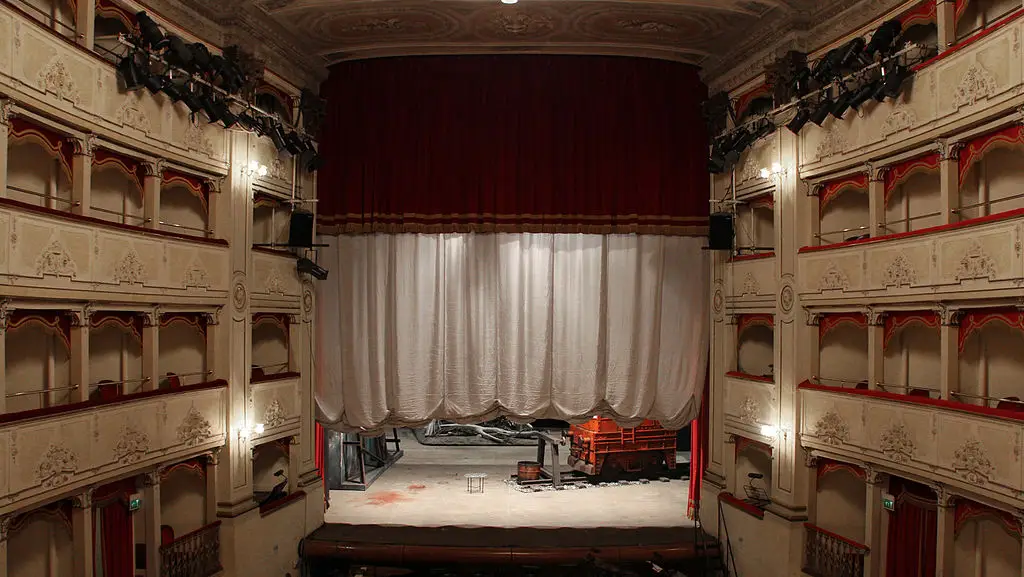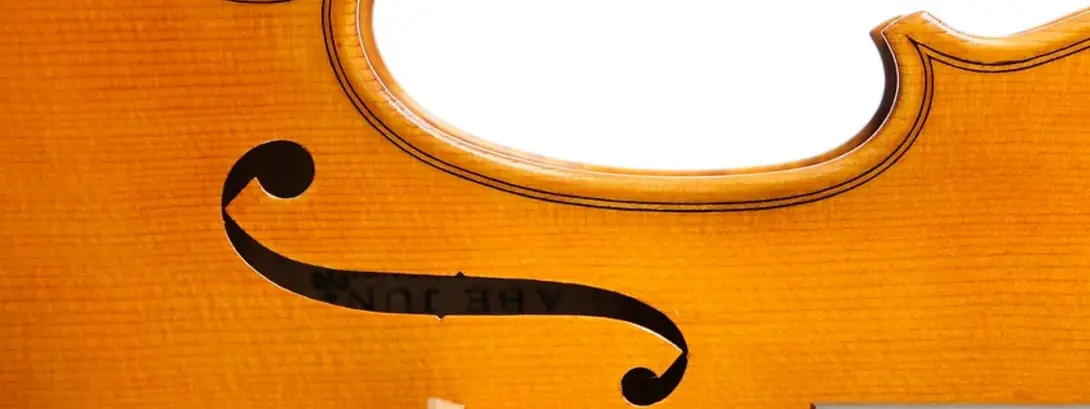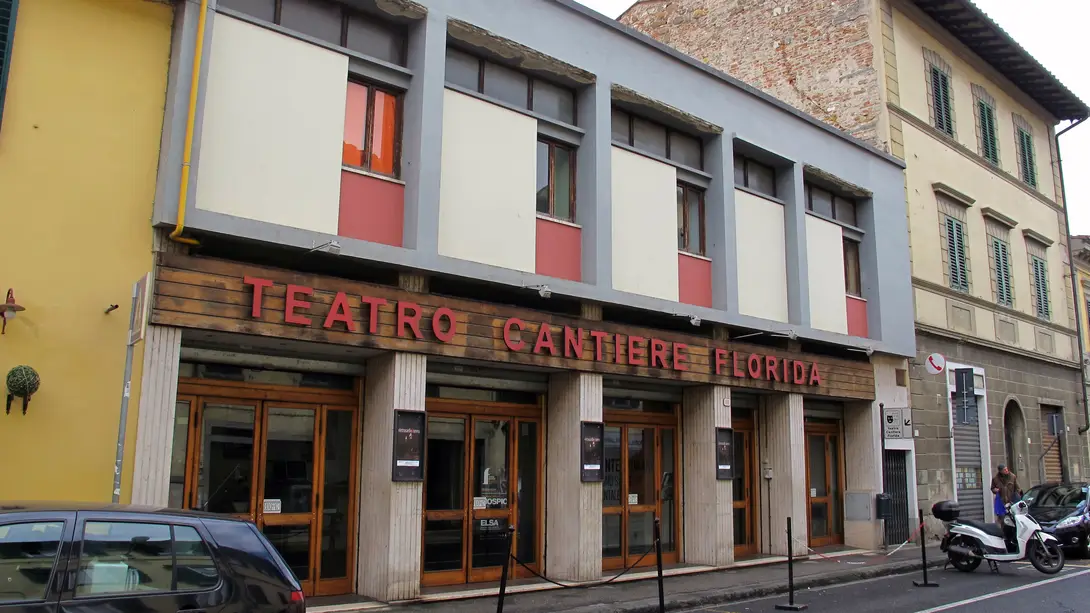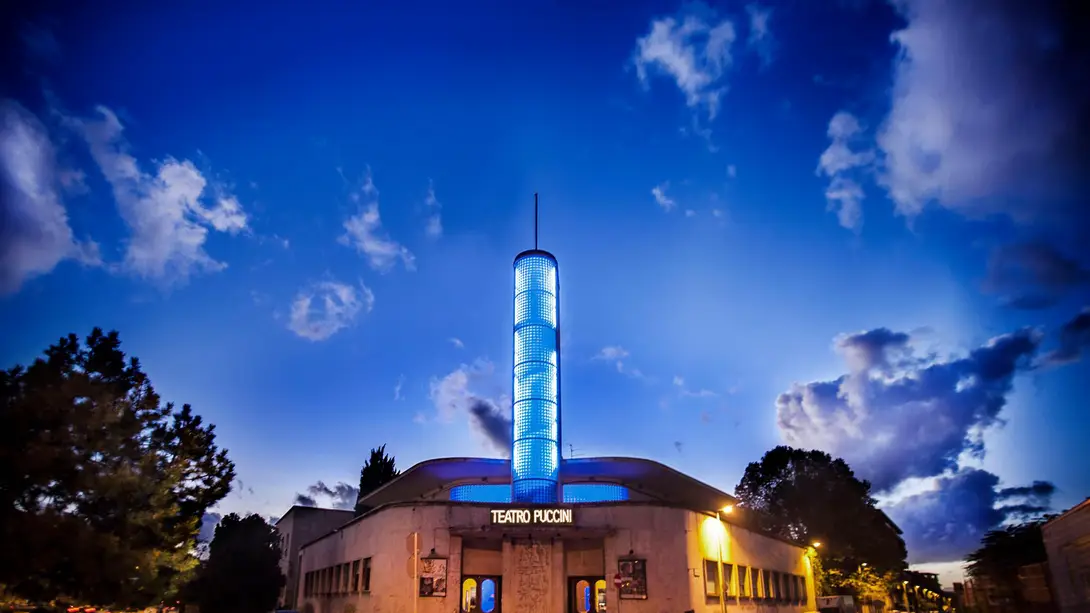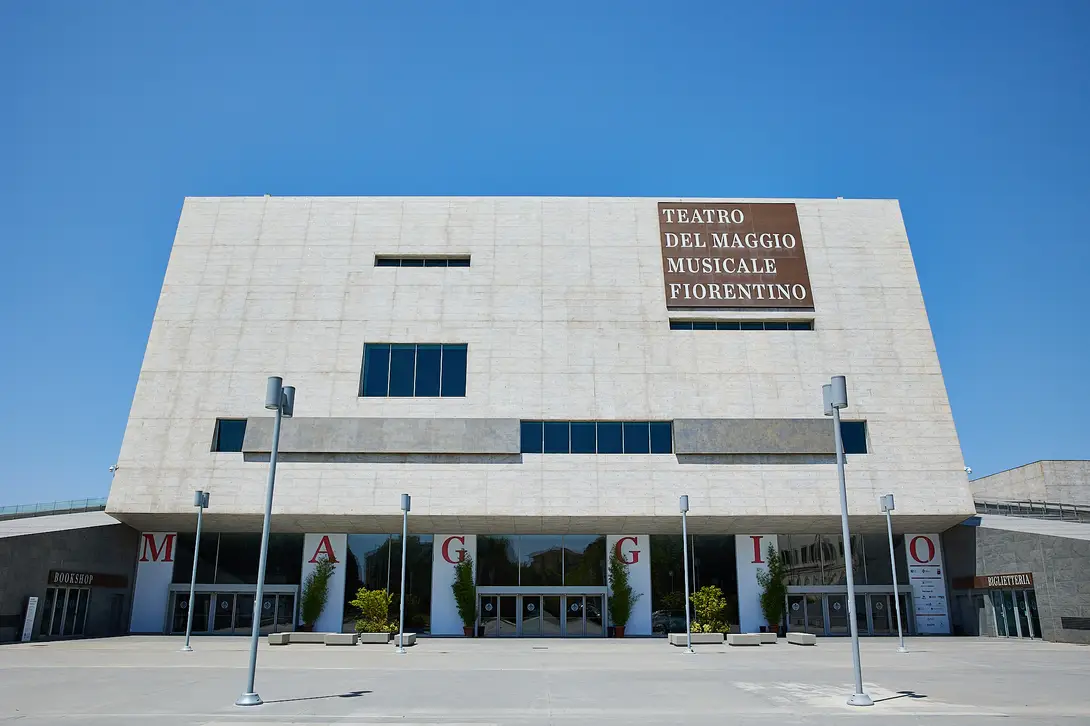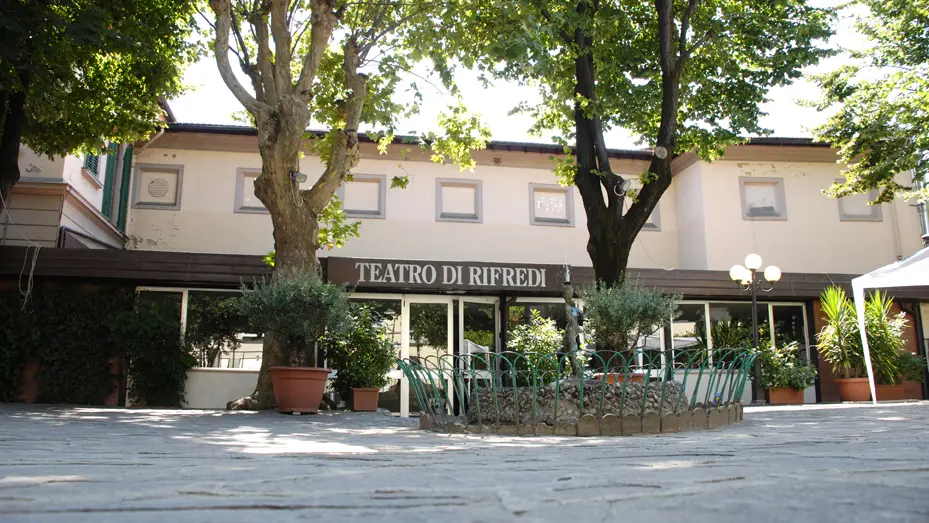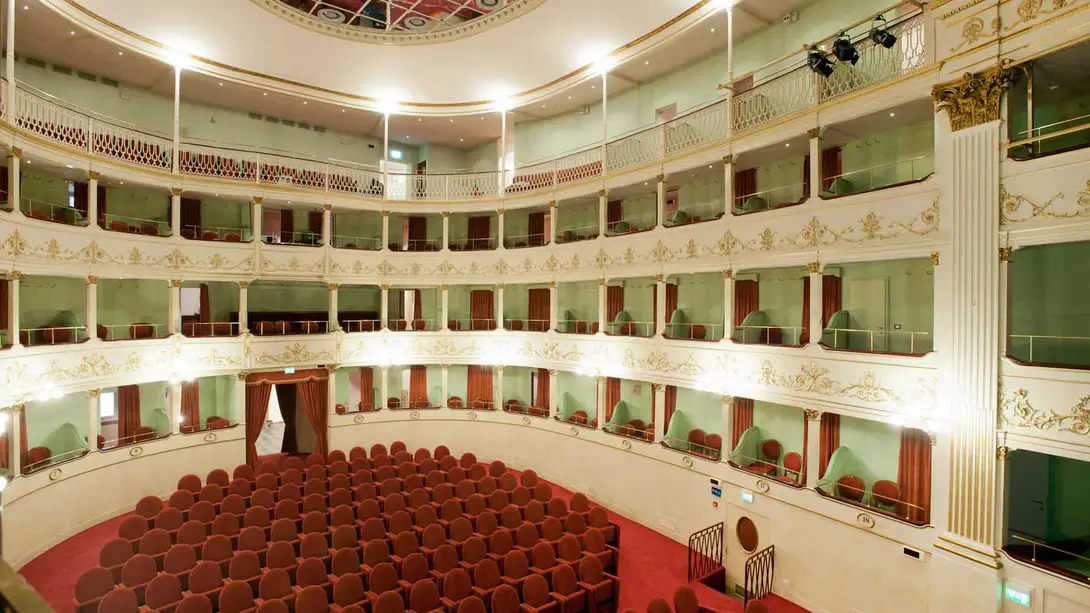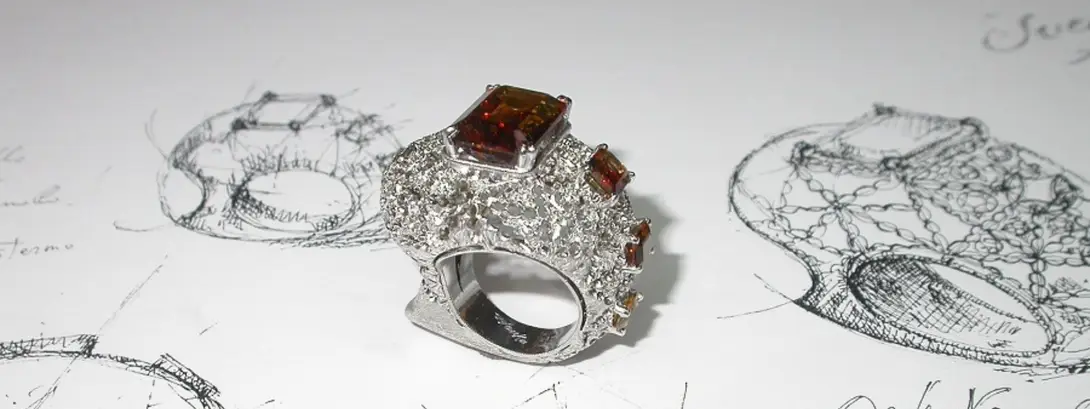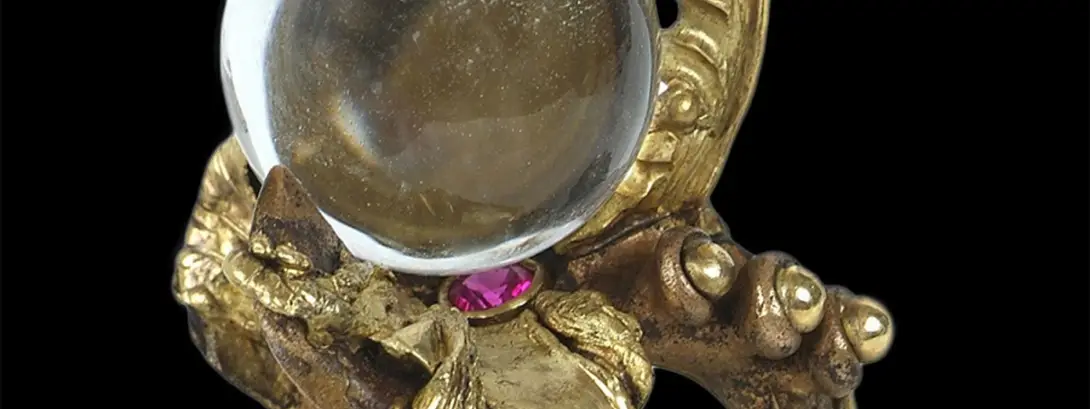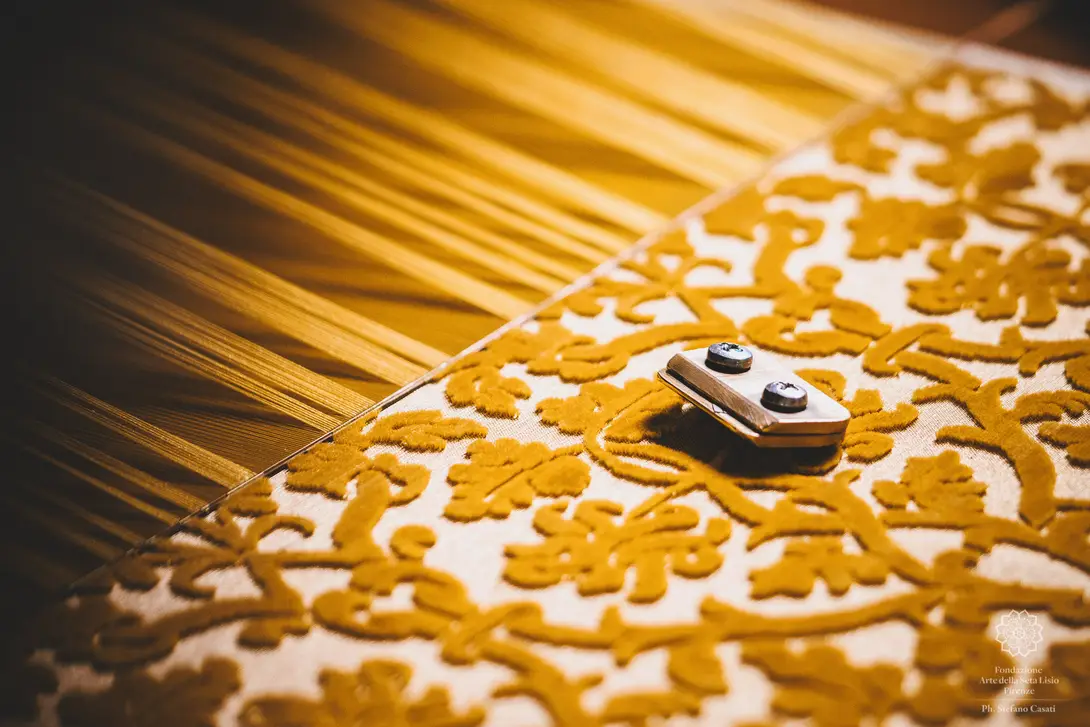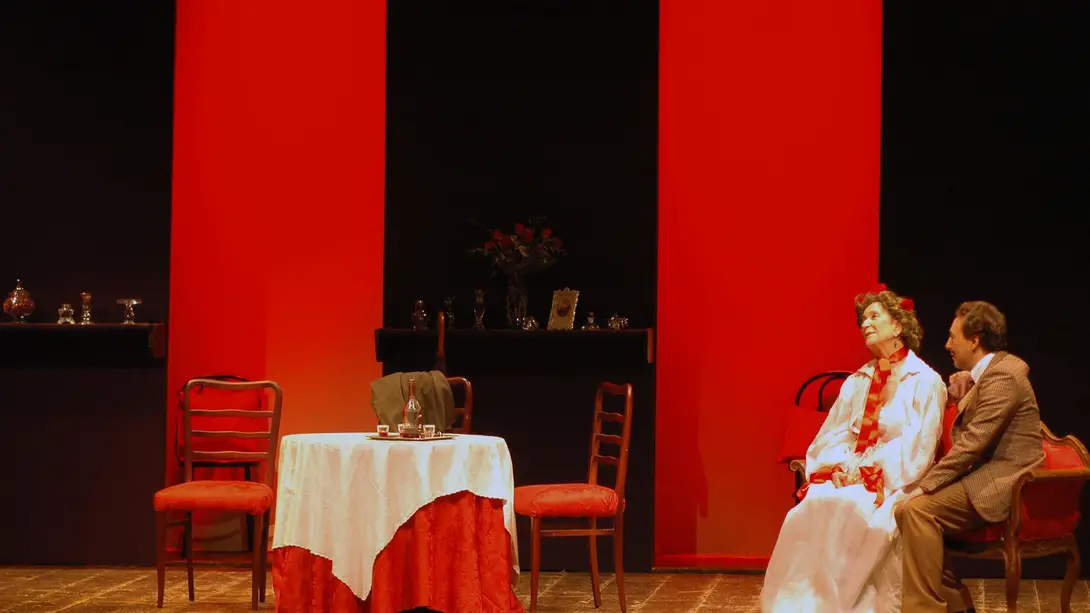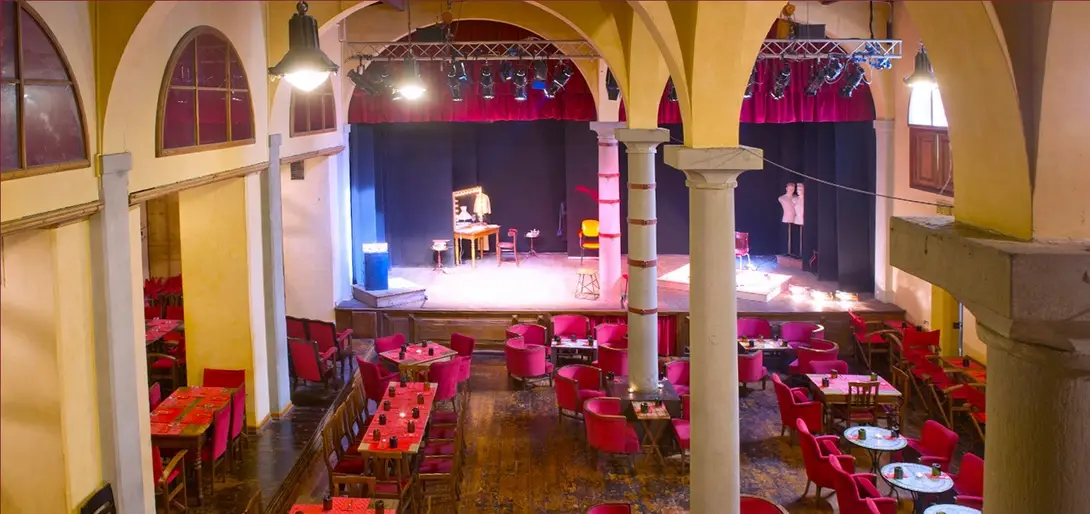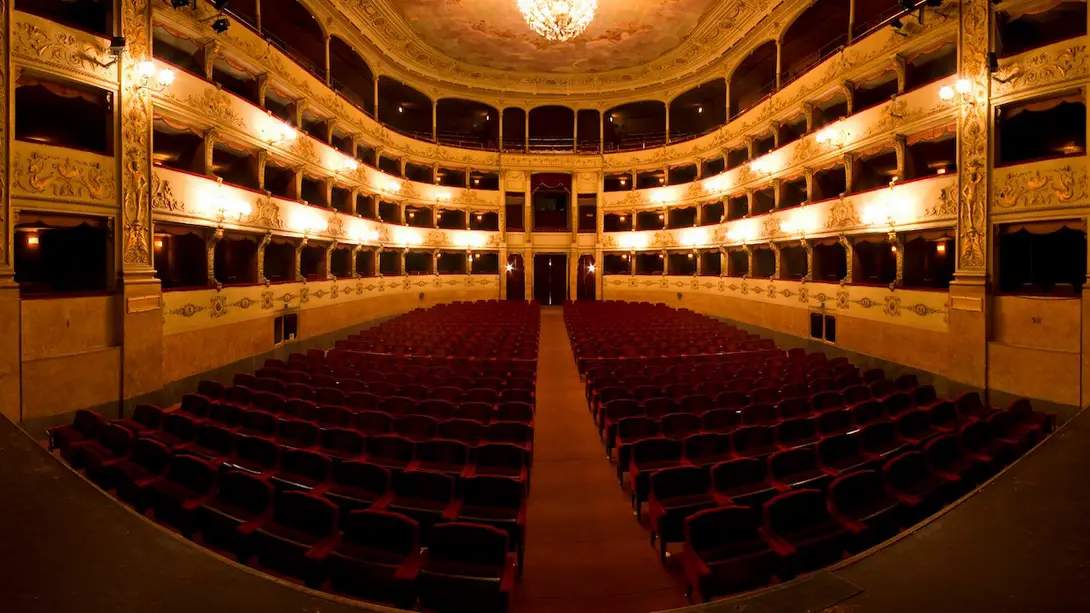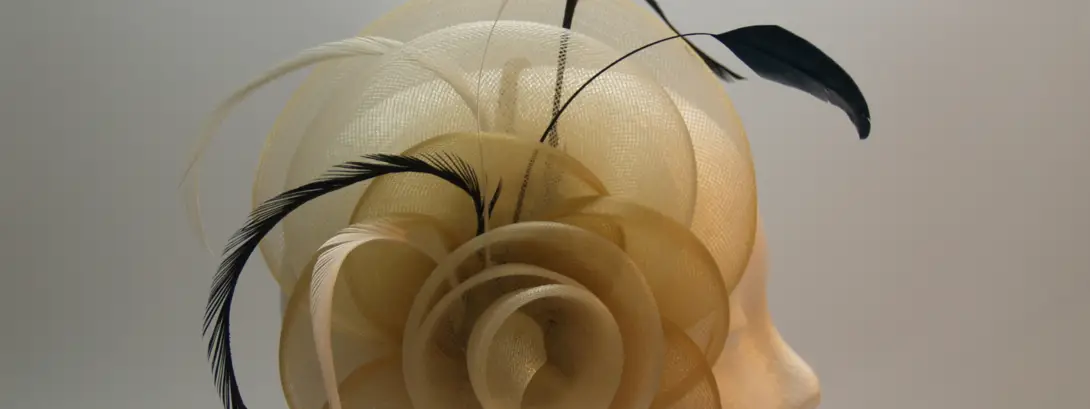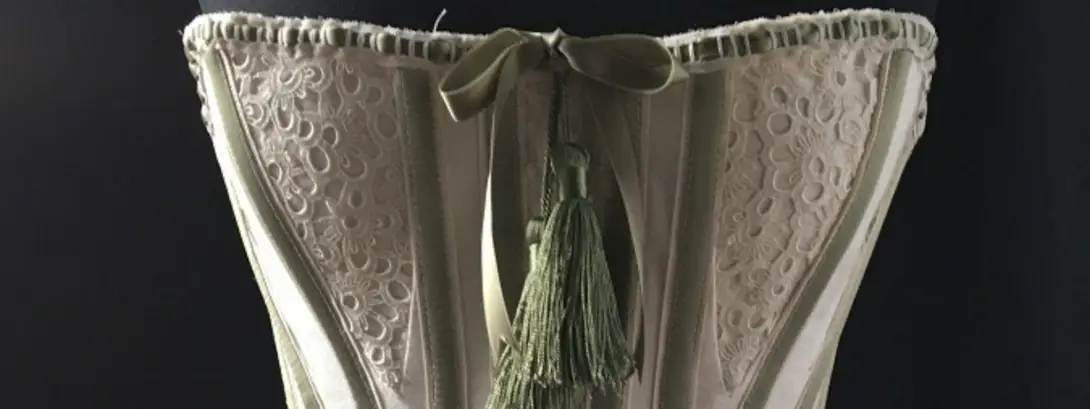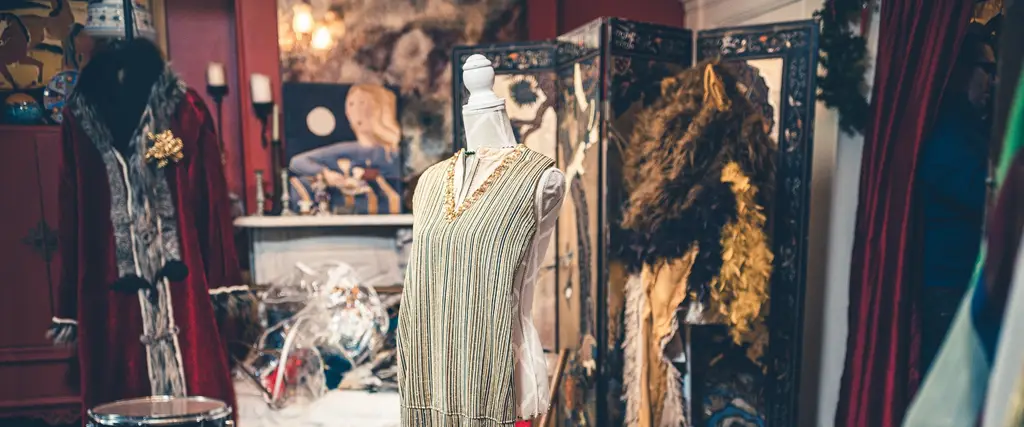
Che spettacolo Firenze! Florence, what a show!
Costume designers, lute-makers, tailors and jewellers are just some of the protagonists of this itinerary to discover the performing arts professions in the Florence of theatres. These professional craftsmen are recognised the world over for their ability to bring phantasmagorical worlds to life, recreate historical costumes, build dreamlike settings, harness allegories and symbols in precious talismans.
A tour among workshops and workshops that have collaborated with theatres, such as Penko, which developed for the Costumes and Scenes workshop of the Teatro della Pergola the jewellery for recitals on the works of Carlo Goldoni, or the Sartoria Madame Flo, where master craftswoman Vittoria Valzania, specialised in historical costumes, reproduced some outfits for the Florentine Historical Football Parade, in collaboration with Spazio NOTA.
This is just a foretaste of the broader and wider panorama of crafts related to the world of theatre, entertainment and stage performances. Crafts that are intertwined with the many creative expressions in Florence, spread through the network of the city's theatres and stages: from the classical repertoire of the Teatro del Maggio with its opera and symphonic performances, to the Teatro della Pergola with its prose reviews, from the satire of the Teatro Puccini to the experimentation of the Cantiere Florida and so on.
This itinerary is part of the European project Crafts Code.
Artex
Les lieux
Étapes
Teatro Goldoni
The Goldoni Theatre dates back to the early Nineteenth Century, thanks to the initiative of a private individual called Luigi Gargani, who entrusted the project of this theatre to Giuseppe del Rosso. This modern building serves two purposes: it is used as an indoor theatre and open-air arena, with a large seating capacity. Inaugurated in 1817 with prose works, it soon focused on music and opera.
The Goldoni Theatre hosted Società Filarmonica Fiorentina, the real forerunner of Stabile Orchestrale commissioned by Vittorio Gui, from which Maggio Musicale Fiorentino and today’s Orchestra of the same name of the Festival originated. Situated near Palazzo Pitti, the Goldoni Theatre was used as a court theatre by the Lorraine family, but the advent of the Kingdom of Italy and the events linked to Florence as the capital led to a temporary decay of the Theatre. In 1875, it was newly inaugurated with "L'ltaliana in Algeri" (The Italian Girl in Algiers) by Rossini and then there was a long period of oblivion, also when the wars broke out.
It is currently used by Maggio Musicale Fiorentino.
ABE JUN LIUTAIO
Abe Jun dedicated himself to violin making from 1981 in Tokyo and Nagano at Yu Iida's botega. He then moved to Salzburg to devote himself to restoration and in 1985 to Florence at Mitsumasa Usui to devote himself to bows.
His acquaintance with Giuseppe Stefanini and Giancarlo Guicciardi enabled him to perfect his style. Since 1991, he has been practising on his own. His violins are inspired by models of Stradivali and Guarneri di Gesù, while for the violas he makes his own models.
The varnish used is oil, according to classical tradition, yellow-red-orange, transparent and thick.
He has been an A.L.I. member since 2000.
Teatro Cantiere Florida
The Teatro Cantiere Florida wasre-opened in 2002 after a skilful restoration. Currently, this is the only multi-disciplinary artist in-residence experience in Florence and it is supported by Regione Toscana and managed by Elsinor – Theatre Production Centre, Versiliadanza and Murmuris Theatre.
Teatro Puccini
The “Teatro Puccini” was newly opened in 1940 as a theatre for the Recreation Workers’Circle. After the war, it was used as a dance hall and for boxing matches; then, between 1964 and 1972, business was based mainly on films.
With the1991-92 season, the theatre wasre-opened and called Teatro Puccini - Stable Theatre of satire and contamination of genres, founded by Sergio Staino who was the director until January 1999. During the past years, high quality productions were showed and well-known artists such as Marco Paolini, Paolo Rossi, Dario Fo, Franca Rame, Moni Ovadia, Lella Costa, Paolo Hendel etc performed on this stage. At present, the Puccini represents an extremely important point of reference in the city and in the region for a growing audience.
Teatro del Maggio Musicale Fiorentino
The new Opera House of Florence is an avant-garde music center for all of Europe. The “Park of Music and Culture”, which comprises the theatre, the auditorium and an open air amphitheatre, was planned by Paolo Desideri in 2008; it is home to the Maggio Musicale, the most important music institution of Florence.
Nuovo Rifredi Scena Aperta
The theatre was built in 1913 by the members of the centennial Mutual Benefit Society of Rifredi who are still the owners. During the mid-20s it was burned by the fascist brigadesand later transformed into a Casa del Fascio (local fascist headquarters).
After the war, the workers members of the Mutual Benefit Society of Rifredi were obliged to buy it again from the State, pawning their personal properties to pay. Since 1967 activities re-started and at the end of the ‘60s, beginning of the ‘70s, the theatre took the name of “Humor Side” and became an important meeting place for young people, dedicated to cabaret and pantomime.The Rifredi is now managed by the Compagnia Pupi e Fresedde.
Teatro Niccolini
The Teatro Niccolini, the oldest theatre in Florence, was inaugurated in 1658 as the venue for the theatre company ‘Accademia degli Infuocati’. Originally, the name was ‘Teatro del Cocomero’ because it was situated on Via del Cocomero, now Via Ricasoli.In 1860, the name was changed again to honour the famous playwright, Giovan Battista Niccolini. In 1888, it was the first theatre in Tuscany to have electric lighting.
As cinema became popular, the Niccolini was converted into a movie theatre until the 1970s, when the owners founded the Granteatro Company, active for about fifteen years. This company re-established the function of theatre of the Niccolini and produced a series of memorable seasons. In 1995, it was closedbecause damaged and unusable and in 2007, the new owner launched a major refurbishment project for the structure, which was completed at the end of 2015, when the theatre finally re-opened.
Penko bottega orafa artigiana
Master goldsmith Paolo Penko, in his workshop in the heart of Florence, just a few steps from the Duomo, together with his wife Beatrice - an expert in gemology - and their son Alessandro, creates unique jewellery, made entirely by hand, according to the ancient techniques of the Florentine goldsmith tradition.
Unique and recognisable, the Penko style succeeds in harmoniously interweaving the beauty and quality of the material with the fascination of references to forms and symbols of Florentine painting and architecture.
A Paolo Penko object is not a simple piece of jewellery, but a harmonious union between past and present, between tradition and innovation, between creativity and know-how and, above all, it is capable of telling a story, of conveying a message and a content, merging it with a strongly glamorous soul.
Unique works created with the ancient techniques of the Florentine goldsmith's art. Creations born to satisfy the desires of an increasingly international clientele.
Jewellery that draws inspiration from the most ancient and precious soul of the city of Florence with its small and large geometries, spirals, volutes, friezes and all those shapes and lines of architecture and art that made Florence unique during the Renaissance and that still reflect their unchanged beauty today.
All the stages in the making of a piece of jewellery begin with the scrupulous choice of stones, their cut and colour shade, and then move on to shaping the precious metals using ancient gestures and techniques such as cuttlefish bone fusion, agemina, niello, cesoro and Florentine penkato. Techniques, still alive in our workshop, through which jewellery, silverware and works of sacred art come to life. Unique creations, also of innovative design but reflecting centuries of history and tradition.
Alessandro Dari Jewels
In the Dari dynasty, the tradition of the goldsmith's art has been handed down for generations, ever since the first workshop was established in 1630 with Aldebrando Dari.
Master goldsmith as well as alchemist, pharmacist, craftsman and musician, Alessandro Dari is an all-round artist, heir to the poetics and ingenuity of the great Renaissance artists.
For the Maestro, spiritual research is a constant stimulus for the creation of works that do not limit jewellery to adornment of the body and, breaking with an extremely hedonistic vision, elevate it to the level of Art.
To wear one of his jewels is to wear a history, a tradition and a work of unique craftsmanship. His sublime jewellery-microsculptures convey an entire universe enclosed within a few centimetres of metal, gold, silver and precious stones. Exemplary work, for artistic works that are unique in the world.
Fondazione Arte della Seta Lisio
Fondazione Arte della Seta Lisio carries on the ancient tradition of hand-weaving silk, gold and silver. Our premises are dominated by large hand looms from the late 19th century which, under the skilful hands of master weavers, lend themselves to the creation of exclusive fabrics based on designs from the historical Giuseppe Lisio archive.
In the School of Textile Arts, we teach the art of weaving in courses in which theory and practice are able to merge and finalise high and complete training.
Teatro Lumière
Teatro Reims
The theatre building dates back to 1976. Theatre performances, usually held here, are mainly related to the Commedia Fiorentina d’autore (Florentine original theare). The structure has a capacity of 290 seats and owes its current appearance to a major restoration carried out in 1995 on a project by architect G. Brachetti. Great Florentine actors like Giovanni Nannini and Adelaide Foti used to perform here. Since 2015, the activities of Reims Theatre are managed by Associazione “Loriolo”.
Teatro del Sale
The "Teatro del Sale", created in 2003 by Maria Cassi and Fabio Picchi, is both a cultural space and a restaurant.
The artists performing on the small theatre stage come from all over the world: there is a dense programme of music, dance and theatre, about 240 shows a year.
To take part in the events it is necessary to subscribe a membership card. In order to enjoy the buffet dinner that precedes each performance, it is also necessary to book.
Teatro della Pergola
The Pergola Theatre in Florence was inaugurated 350 years ago to meet the needs of the growing local theatre community.
Ferdinando Tacca was commissioned to design the new theatre, clearly inspired by Renaissance Architecture models:the theatre had a single hall and balconies for single families, which allowed for a more intimate and privileged view of the show. Therefore, the Pergola Theatre became theprototype of the Italian-style theatre.
Its plan is horseshoe-shaped, its stage is very deep and its auditorium wide. Open to the paying public since 1718, the theatre was expanded and, in 1801, the Saloncino (small hall) was added for music and dance.
Many great authors chose this theatre for their operas, including Antonio Vivaldi, Giuseppe Verdi, Eleonora Duse, Eduardo De Filippo.
Mode Liana
The history of Mode Liana began in Florence in 1972 when the parents, Rolando and Liana, decided to take over the company where Rolando had worked for more than twenty-five years, Il Fiore Artigiano.
Today the family produces millinery hats and many other accessories for brides and grooms, ceremonial and elegant wear, cinema and theatre, all handmade by professional milliners and made in Florence.
Madame Flo
Vittoria Valzania works for the Historical Re-enactments of the Municipalities of Florence, Pisa, Orvieto and Scannagallo, Rotary Clubs and Banca Mediolanum. She is a lecturer at the Historical Costume and Performance workshops of Fondazione Arte della Seta Lisio.
In 2021 she was awarded OMA artisan status by the Fondazione CR Firenze; in 2022 she was awarded Master Craftsman status. Each garment created is unique and unrepeatable, made entirely by hand and cared for down to the smallest detail.
